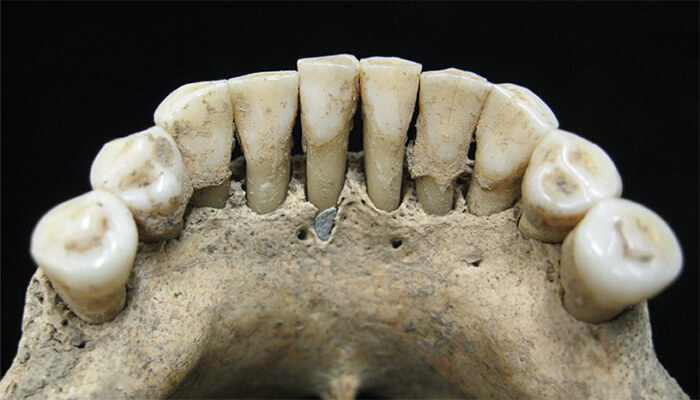According to a recent discovery by an international research team, when it came to producing illuminated manuscripts, women in the Middle Ages really got their teeth stuck into the process.
They analyzed the teeth of a female skeleton found in Dalheim, Germany, and discovered a blue pigment in the dental calculus. Micro-Raman spectroscopy confirmed it was lapis lazuli, a mineral used for coloring the manuscripts at the time, and more recently as a semi-precious stone in jewelry.
Illuminated manuscript production in the Middle Ages was previously thought to be the province of men, specifically monks (according to an article in The Atlantic, one expert suggested this woman had come into contact with the pigment because she was the ‘cleaning lady’). “Microscopic analyses have revealed that dental calculus (calcified tooth tartar) can entrap and preserve a wide range of microdebris related to craft activities,” said the authors in the paper. One of the researchers’ theories for this is that women were involved in the production process, thus painting a different picture of medieval gender roles.
What’s more, it gives some insight into trading at the time – the lapis lazuli stone was mined only in Afghanistan, 4,000 miles away. In this case, it was found in “an otherwise unremarkable women’s community in northern Germany,” which, the authors believe, “powerfully testifies to the expansion of long-distance trading circuits during the 11th-century European commercial revolution.”
This isn’t the first time a tooth has told the truth; dental plaque has shown that women from ancient societies were partial to smoking and has even helped reconstruct the genome of the bacterium behind the Great Plague.





